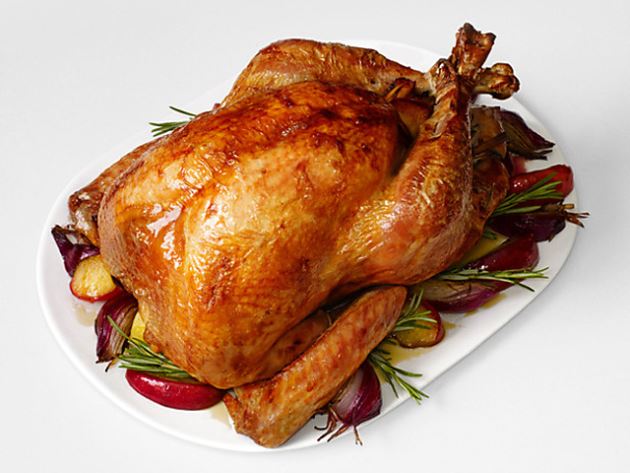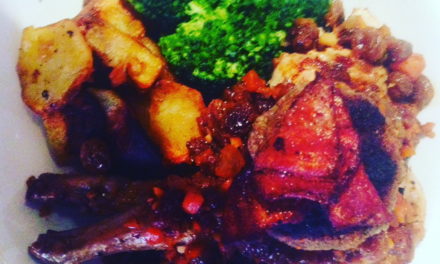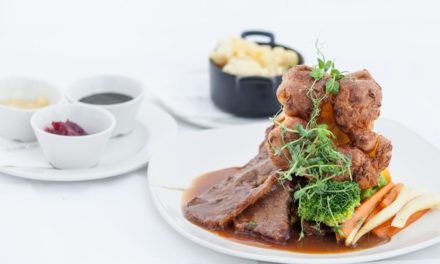Why we only eat Turkey at Christmas (or Thanksgiving if you are from that part of the world) is beyond me. It is such a delicious meat, healthy and low in fat. I think it could be that so few people know how to cook one without it going dry. After all, eating a slice of breast that has the texture of cardboard isn’t the best memory. My dear mother, whose ability to cook had always been questionable, used to put the turkey in the oven on a low light overnight! Needless to say the net result was what culinary nightmares were all about. Not that we cared then as it was Christmas day and other things were much more important. On one Christmas lunchtime there was a call from the kitchen from said Mother to assembled family in the lounge. Going into the kitchen my mother — who by now had probably had a good few G&Ts — had “Lost the Turkey!” Assuring her that she was being stupid and that she could not possibly have lost the thing as it would have been at least six kilos!! But initial looks in the oven and even the fridge did not produce results. Did she put it in the bin? Did a dog come in and nick it from the kitchen? A painstaking search ensued until it was found — in the cupboard next to the cooker! Dear mother RIP and Merry Xmas!
So in order to keep the turkey moist (and not lose it!) what’s the best way to go about it? I have worked out there are two ways. It will depend on whether you will want to carve the turkey at the table or will cut and plate it in the kitchen.
Place the turkey ‘upside down’ in a roasting pan on a rack.
Or remove the legs from the bird and place in a normal roasting pan. This has the advantage of cooking the legs a little before placing the crown on top later. Also if you have a small oven it makes life a little simpler.
THE DAY BEFORE: prepare the Turkey (whichever way you decide to cook it, it is the same method of preparation) remove the giblets and cut off the wing bits (to the first bone) giving you an extra meaty bit for the stock you are going to make for the gravy.
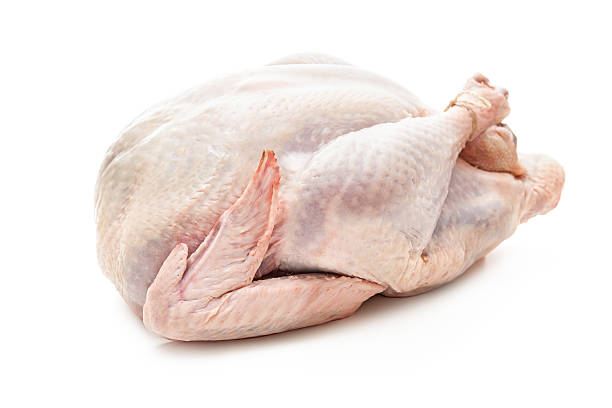
Uncooked turkey isolated on white background
Place turkey on a tray or pan and lightly salt all over. Leave uncovered in the fridge overnight. This will allow the bird’s skin to dry out, making it crispier,
In a stock pot chop up a small onion, a stick of celery and a carrot and add bay leaf and a few black peppercorns. Add the giblets, wing bones and cover in water. Bring to the boil, simmer gently for about an hour. Remove, strain and keep in the fridge for the next day.
THE DAY OF COOKING: Method one:
Remove the turkey from the fridge at least two hours before you intend to cook it so as it can get up to room temperature. Open the skin on top of the breast meat by putting your fingers under the skin and moving them around. Stuff this area with knobs of butter. Sprinkle with black pepper.
DO NOT STUFF THE TURKEY. ‘What??’ I hear some of you cry. I avoid this, as normally the cooking times vary and that is why the turkey can be overcooked as it so important that the stuffing is cooked through. So, do it separately!
Place the bird breast side down on the tray and cover in foil. Place in an oven oat a temperature of approx 200 degrees C or gas mark 6 for 20 minutes. Then turn down to 165 C/Gas 3. Cooking times are approximately 45 mins per kilo. Half an hour before it is ready, remove from the oven put the bird on its back (breast up) and put back into the oven at 200 degrees again. At the end of this time remove from the oven and the rack then return it to the tray allowing the juices to be absorbed back into your Turkey, cover and allow to rest.(approx 30 minutes.) To test that the bird is cooked, with a sharp knife insert into the leg at its joint to the body, the juices should run clear.
Add all the juices from the pan to your stock to make your gravy as you wish.
This method allows you to present your bird to the table.
The other method involves removing the leg and thighs from the bird leaving the crown separate.
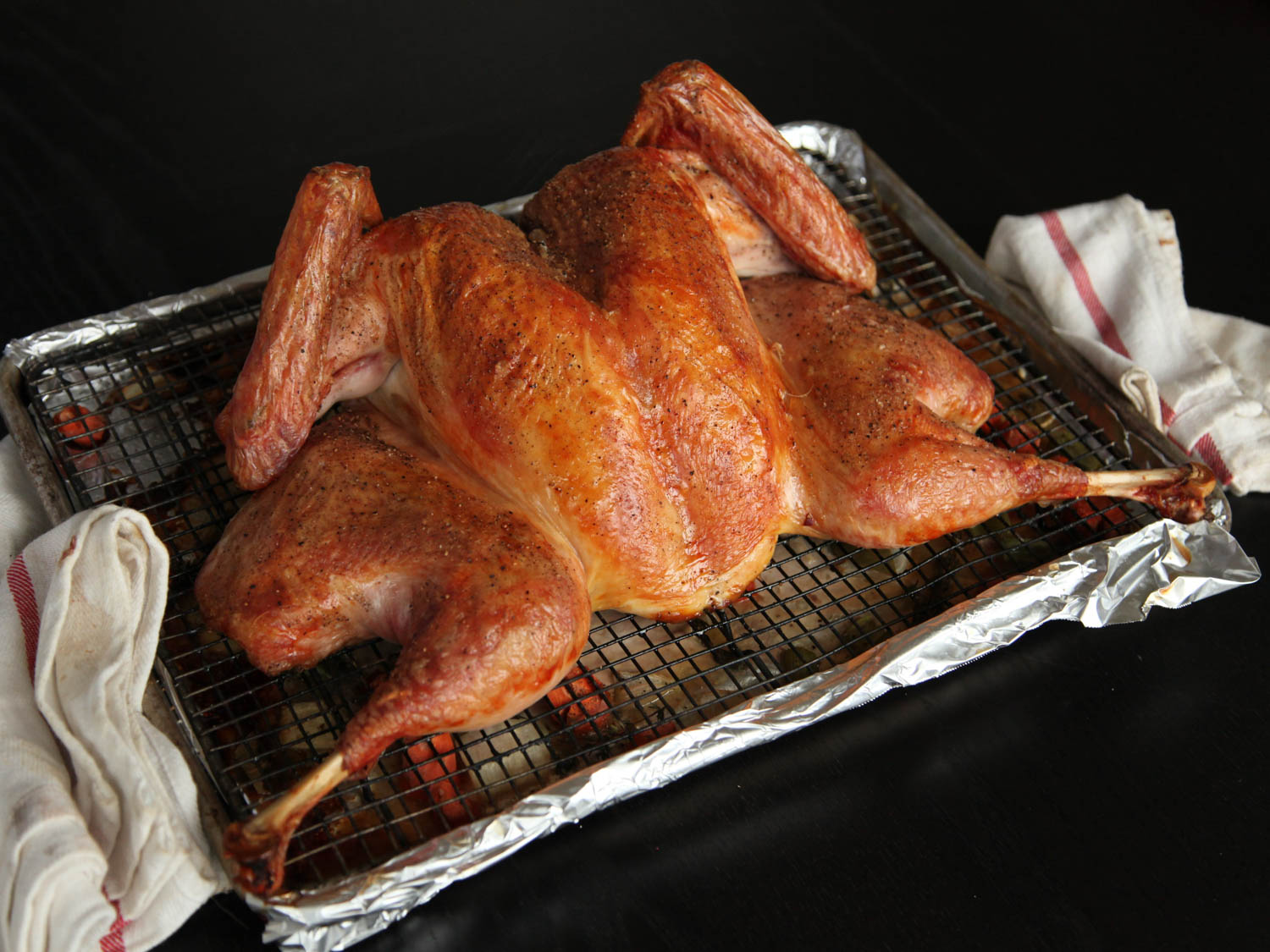
THIS IS HOW YOUR TURKEY MAY LOOK
Place as before, into a hot oven (200 C) for 20 minutes. Remove from the oven and place the breast/crown on top of the legs and cover with foil. Reduce the temperature (165 C). This method will cook the bird quicker by 15 minutes or so (approx.10% of cooking time). So for the last ten minutes or so, remove the foil and increase the oven again to 200C.
Remove and rest as before. Carve into portions and serve.

